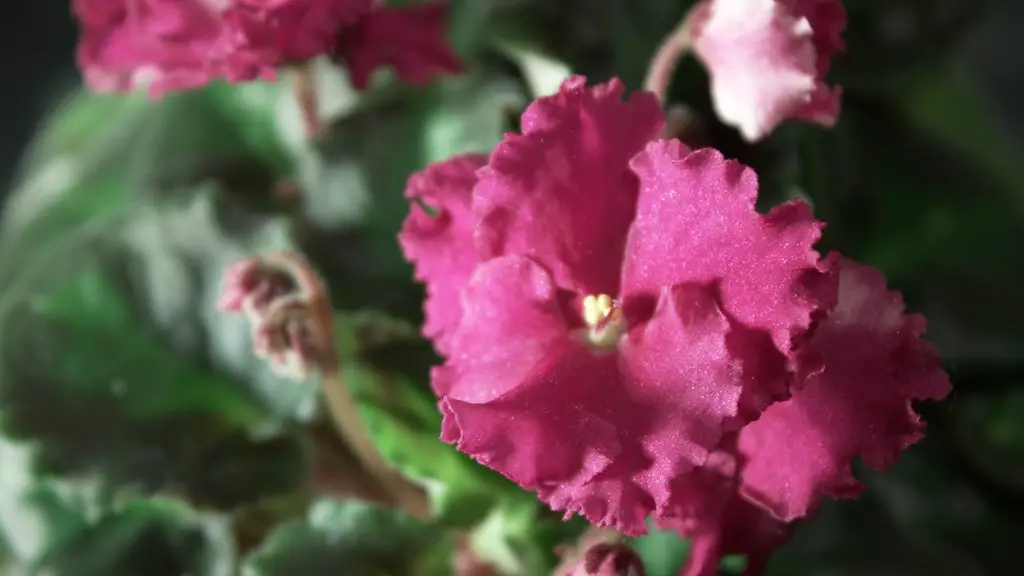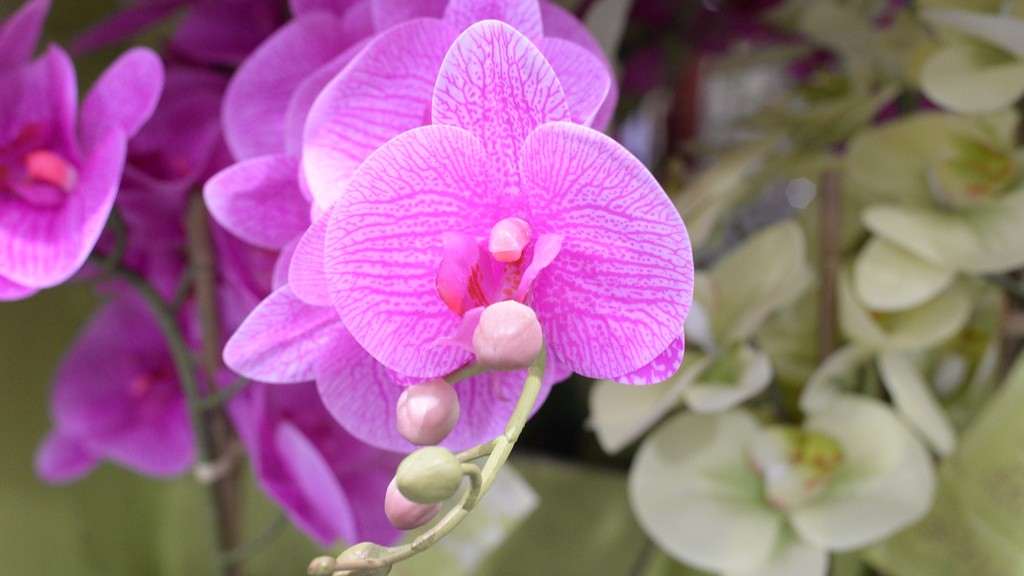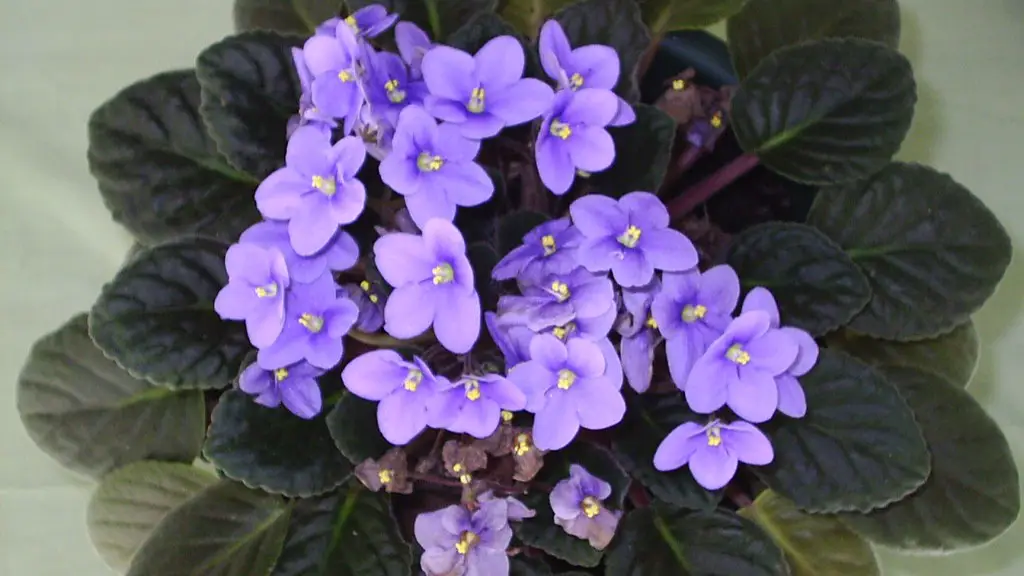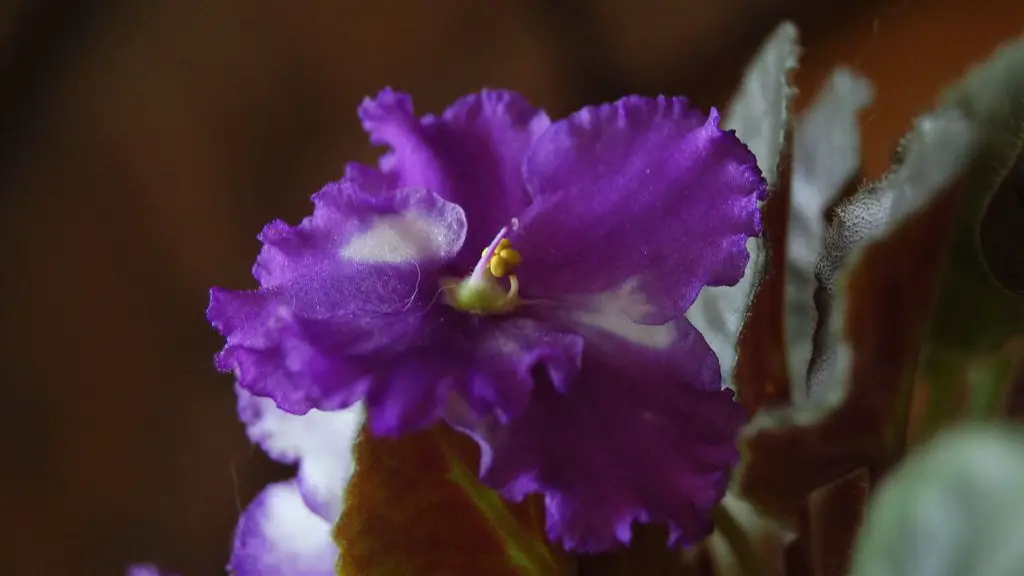African violets should be transplanted when they become potbound, which is usually after about two years. The best time to transplant is in spring or early summer.
The best time to transplant African violets is in the spring, when the plants are actively growing.
How do you know when to transplant an African violet?
If you notice that your African violet is starting to wilt, it’s probably time to repot it into a larger pot. This will help to prevent the roots from becoming too bound.
It can be a bit of a balancing act to keep your African violets healthy and blooming. They like to be a little crowded above ground, but if the pot gets too crowded below, they can start to struggle. In fact, an African violet with too many leaves might even withhold its beautiful blooms—or stop growing altogether!
What is the best way to transplant African violets
African violets are beautiful, flowering plants that make lovely additions to any home. If you’re thinking of adding one to your collection, you’ll need to know how to properly repot it.
Start by placing a thin layer of soil inside the pot. Then, set the root ball on top and gently cover it up to the base of the leaves. Pat down just enough to stabilize, but be sure to keep it loose.
Next, place the pot in a saucer of water and allow your plant to soak up as much as it likes. Once it’s finished, drain the excess water and enjoy your beautiful new plant!
African violets do best when they are slightly pot-bound, so choose a pot that’s on the smaller side. Professional Tip: If you have a standard African violet plant, your starter pot should be about 3-4 inches in diameter.
What is the lifespan of an African violet?
African violets are known to be able to live a very long time, up to 50 years! In order to keep them alive and healthy for that long, you need to provide them with good care, which includes repotting them every so often. The trick is knowing when to repot an African violet, as well as what size of container and type of soil to use. With proper care, your African violet can thrive for many years to come!
If you find that your African violet is looking leggy, there are a few things you can do to help it out. First, try repotting it in a fresh space. This will give it a chance to start over and hopefully grow new leaves. Secondly, fertilize it with Espoma’s Violet! liquid plant food. This will help keep it from becoming leggy and will also enhance the colors of your flowers.
What kind of pots are best for African violets?
If you want your African violets to thrive, it’s best to plant them in African violet pots. These self-watering containers come in ceramic or plastic, and are small (4- to 5-inches). By planting in these pots, you can be sure that your plants will get the right amount of moisture.
African violets need to have their roots aerated, so it’s important to keep them moist without being soggy. Watering from the bottom so they can soak up the water for an hour or so will help to keep water out of the plant’s crown. African violets prefer warmer water, around 70 degrees.
Where is the best place to put an African violet
African Violets need bright, indirect light to thrive. A site near an east or north window is often a good location. If a suitable window isn’t available, African Violets can be placed under a fluorescent light fixture containing two 40-watt fluorescent tubes.
African violets are beautiful flowers that can add a touch of elegance to any home. They are relatively easy to care for, but it is important to use the right type of potting soil when transplanting them. Miracle-Gro is a great potting soil for African violets and will help them thrive.
Can I use regular potting soil for African violets?
African violets need special soil because they are very sensitive. Conventional potting mix is too dense for them and can crush or choke their delicate root systems. A lightweight, soilless planting medium is best for them.
When transplanting violets, it is important to choose the right potting mix for your climate. A quality African violet potting mix should provide good water-holding capacity and ample air pockets to guarantee healthy roots. By following these tips, you can develop your green thumb and ensure that your violets thrive.
Are clay or plastic pots better for African violets
As long as your pot has drainage holes, terra cotta is a good option for African violets since it is porous and allows the roots to breath. Be sure to not use a deep pot, as African violet roots don’t grow very deep, and instead like to grow sideways.
African violets thrive in bright, filtered light. They should never be given direct sun, as this will scorch the leaves. The soil should be kept moist, but well drained. You want moist, not soggy.
How do I get my African violet to bloom again?
If you want to get your African Violet to bloom again, here are 8 tips:
1. Let there be light: African violets need bright, indirect light to bloom. If you don’t have enough light in your home, you can try using a grow light.
2. Turn up the humidity: African violets prefer high humidity, so try misting them regularly or placing them on a pebble tray.
3. Replenish essential nutrients: African violets need to be fertilized regularly to bloom. Use a fertilizer designed for African violets and follow the directions on the package.
4. Keep it pleasant: African violets like comfortable temperatures, so try to keep your home between 65-75 degrees Fahrenheit.
5. Choose the right soil: African violets need a well-drained, yet moisture-retentive soil. You can buy a special African violet potting mix or make your own.
6. Protect from pests and disease: African violets are susceptible to pests and disease, so it’s important to inspect them regularly and take action if you see any problems.
7. Constrict the roots: African violets
If you have success getting your African Violet to bloom, be sure to pinch or deadhead spent blooms. This allows the plant to continue to put energy into creating more buds/blooms and beautiful foliage.
Final Words
There really is no definitive answer to this question as it can vary depending on the specific plant and the conditions it is growing in. With that said, it is generally best to transplant African violets in the spring or early fall when the plant is active and growing. This will help to ensure that the plant takes to its new environment and doesn’t experience any transplant shock.
There isn’t a definitive answer to this question, as the best time to transplant african violets can depend on a number of factors, such as the climate you live in and the health of your plants. However, generally speaking, the best time to transplant african violets is in the springtime, when the weather is starting to warm up and the plants are beginning to bloom.





